The 21st Century Workplace: What Management Strategies are Working?

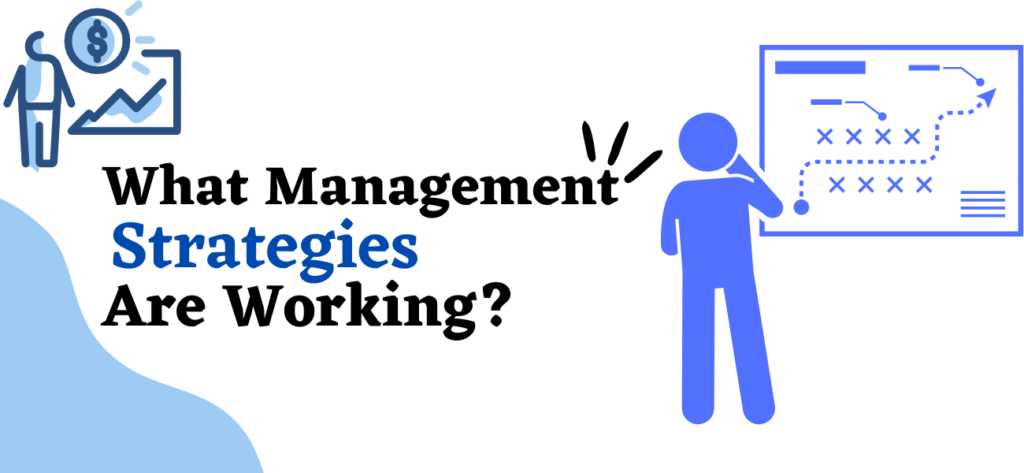
The 21st-century workplace is vastly different from what it was just a few decades ago. The workforce is more diverse, technology has advanced significantly, and the way we work has changed. As a result, traditional management strategies are no longer as effective as they once were.
The topic of the 21st-century workplace is significant because it affects the livelihoods of millions of people worldwide. As the workplace continues to evolve, employers or managers need to understand the changes happening and adapt their management strategies accordingly.
This blog post aims to explore the management strategies that are working in the 21st-century workplace and to provide practical examples of how these strategies are being implemented.
Overview of 21st Century Workplace
The 21st-century workplace is a melting pot of different backgrounds, cultures, and perspectives, and technology has opened up new possibilities for collaboration and innovation. But with these changes come new challenges for employers, who must adapt their management strategies to keep up with the times. In this section, we will take a deep dive into the three key elements that define the 21st-century workplace: workforce diversity, advances in technology, and changing management strategies. From the diversity of the workforce to the impact of technology on how we work, we’ll explore how these factors shape the future of work, and what employers need to know to stay ahead of the curve.
1. Changes in the Workforce; Workforce Diversity
Workforce diversity is one of the most significant changes in the 21st-century workplace that many organizations face. The workforce is now made up of people of different ages, races, genders, and backgrounds, which brings a wealth of perspectives and ideas. However, it also means that management strategies need to be adapted to accommodate the needs of a diverse workforce. For example, managers need to understand the cultural backgrounds of their employees and be able to effectively communicate with them.
2. Advancements in Technology
The advancements in technology have also had a significant impact on the 21st-century workplace. Technology has made it possible for people to work remotely, collaborate with colleagues from different parts of the world, and access information and resources from anywhere. However, technology has also brought new challenges to the workplace, such as cybersecurity threats and the need for employees to constantly learn new skills. Managers need to be aware of these challenges and foster skills that enable them to transform challenges into benefits. Companies that use advanced technology to streamline and automate processes are more likely to succeed in the 21st-century workplace.
The groundbreaking McKinsey Report from early 2017 titled “Harnessing Automation For a Future That Works,” shows that approximately half of the activities conducted in 800 different occupations, ranging from entry-level to C-suite positions, can be automated with current or soon available technology. Despite the growing presence of technology, they don’t think that half of all jobs will be gone in the near future.
Ultimately, this report suggests that current technology has the potential to eliminate a staggering 1 billion jobs and $15.8 trillion in wages.
3. Impact on Management Strategies
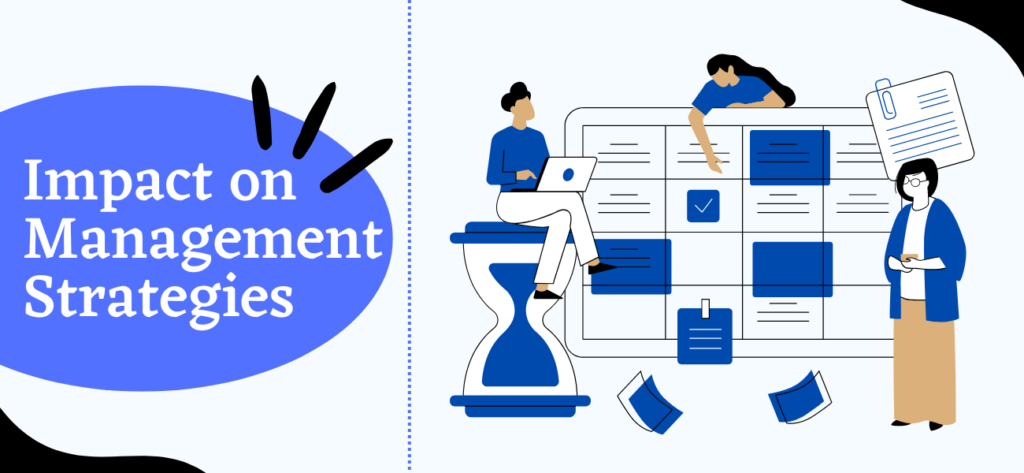
The changes in the workforce and advancements in technology have led to a shift in management strategies. Traditional management styles, such as top-down control, are no longer as effective as they once were. Employers now need to adopt new management strategies that take into account the changes happening in the workplace.
Get more out of your business
Get the best employee engagement content every week via mailing list
Management Strategies that are Working
It is not the case that the above-mentioned changes will affect our workplace negatively, but management strategies must be adjusted accordingly to ensure that the organization remains competitive. Below are some of the management strategies which have been successful in the 21st-century workplace:
1. Emphasizing Employee Autonomy
According to Tilburg University research, employee autonomy leads to higher employee job satisfaction. To foster success in today’s workplace, encouraging employees to take ownership of their tasks which is to emphasize employee autonomy is a management strategy that proves beneficial. When employees are free to make decisions, they feel more invested in their work and are more motivated to do their best. Employers who give their employees autonomy also benefit from the perspectives and ideas of their workforce. Further, employee autonomy increases employee engagement and employee productivity.
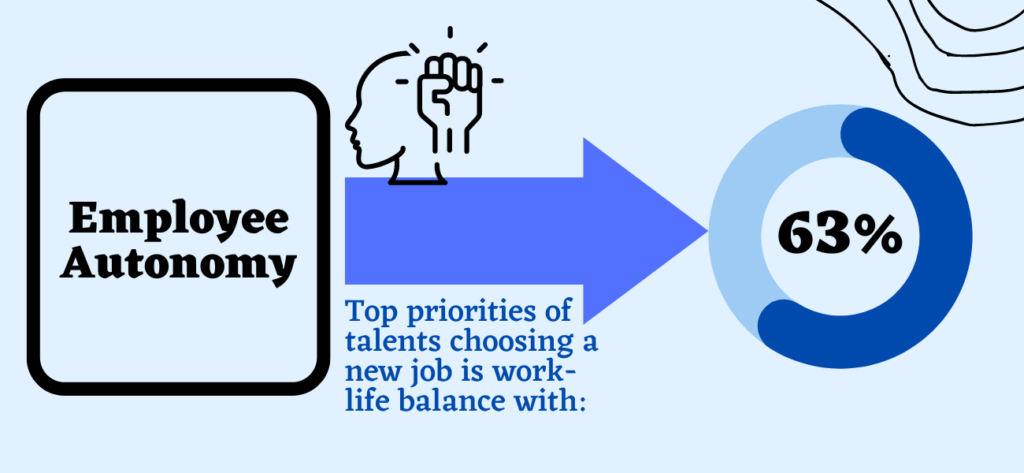
The 2022 Global Trends report from LinkedIn disclosed that when choosing a new job, the top priority for talents is achieving a work-life balance with 63%, surpassing compensation and benefits. Undoubtedly, we long for more than just material motivation in our work. As conversations shift towards discovering how to achieve non-material job satisfaction, the concept of autonomous working becomes increasingly relevant.
2. Embracing Remote Work
Business leaders also face the challenge of embracing remote work. The advancements in technology have made it possible for people to work from anywhere, and many employer companies are now taking advantage of this. Remote work provides employees with flexibility and work-life balance, which has been shown to improve employee engagement, employee satisfaction, and productivity.
McKinsey worked alongside the market research firm Ipsos to query 25,000 Americans in spring 2022, the most striking figure to emerge from this research is 58 percent. That’s the number of Americans who reported having the opportunity to work from home at least one day a week.
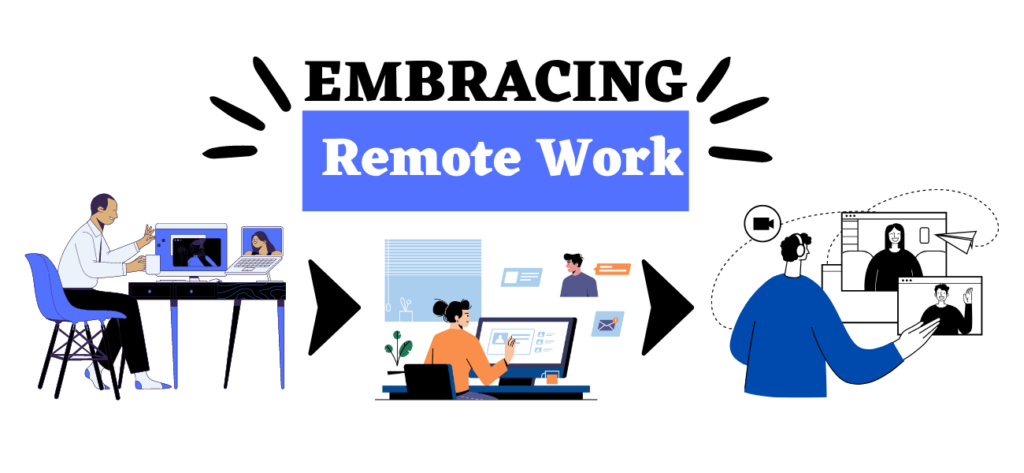
3. Prioritizing Employee Development
A third management strategy that is working in the 21st-century workplace is prioritizing employee development. Employer companies who focus and invest in their employees’ development are more likely to retain their talent and have a more skilled workforce. Employee development can take many forms, such as training, mentoring, and on-the-job learning. Businesses need to ensure that their employees have the necessary skills to succeed in an ever-changing workplace.
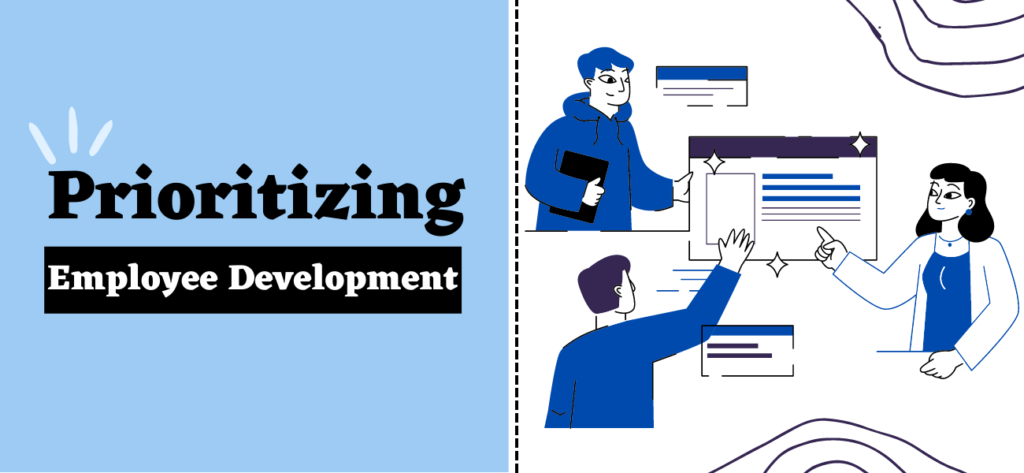
According to LinkedIn’s Workforce Learning Report, a remarkable 93% of employees claim that they would be more inclined to remain in their position if the company dedicated effort and resources to helping them grow professionally.
Forbes succinctly described it like this:
“An employer who doesn’t focus on (training) is going to lose out — in performance, engagement, and retention.”
4. Encouraging Flexibility and Work-Life Balance
Employees want to be a part of something besides a job and making money. Encouraging flexibility and work-life balance is also a management strategy that is working in the 21st-century workplace. Research indicates that employees with a good work-life balance are less stressed, more satisfied, and more productive in their job roles. Employers who provide flexibility in terms of working hours and locations are also more likely to retain their employees.
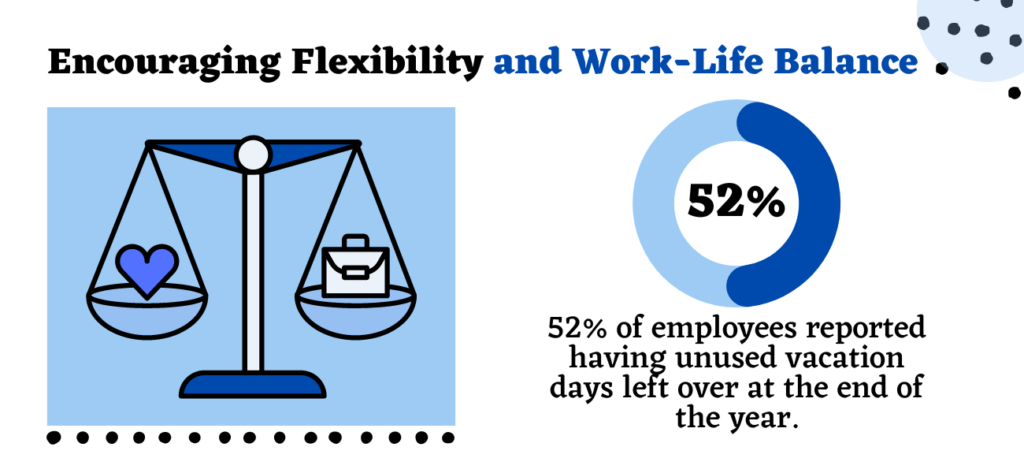
The findings of the 2018 State of American Vacation study, carried out by the U.S. Travel Association, were staggering: 52% admitted to having remaining vacation days at year’s end! Employees are often worried that taking time off will disrupt the workflow, and they will be met with a backlog of work when they return. This fear should not restrict you from taking a much-needed break.
5. Emphasizing Transparency and Communication
Emphasizing transparency and communication is a management strategy that is working in the 21st-century workplace. When employers are transparent about their goals and plans, employees feel more included and engaged in their work. Effective communication also helps to build trust and understanding among colleagues.
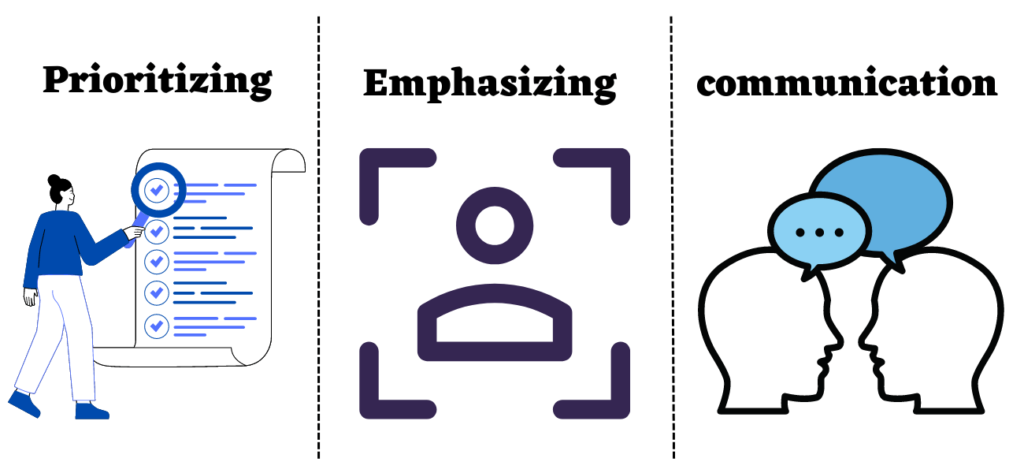
Challenges Facing the 21st Century Workplace
Despite the positive changes happening in the 21st-century workplace, there are also many challenges that employers must navigate. Some of the challenges include:
1. Managing /Remote Teams:
Remote employees are not immune to feelings of loneliness. In fact, according to Forbes, nearly one in five remote employees feel isolated all the time and two-thirds reported feeling lonely at least on occasion.
Remote work does have many benefits, but a notable drawback is feelings of loneliness. Employers who use a remote work model must focus on team support and remote team building. Helping their teams feel supported with social events and virtual meetings will mitigate this drawback.
Managing remote teams can be a significant challenge in the 21st-century workplace. With the rise of remote work, employers face new and unique challenges when it comes to managing and communicating with employees working from different locations. Some of these are as under.
(i). Communication: It can be challenging to keep remote employees informed about what is happening within the company, and it can also be challenging to ensure that everyone is on the same page. This can lead to misunderstandings and inefficiencies, which can negatively impact productivity and morale. Employers must find ways to keep remote employees informed, such as through regular video conference calls, instant messaging, and shared project management tools.

(ii). Lack of Sense of Cohesion: When employees are working remotely, it can be challenging to create a sense of camaraderie and shared purpose among team members. Employers must find ways to foster a sense of connection among remote employees, such as through regular team-building activities and virtual social events.
(iii). Managing Employee Productivity: Managing remote employees’ productivity can also be a challenge. It can be difficult to know if remote employees are working when they are not physically present in the office. Employers must find ways to measure productivity remotely, such as through time-tracking software and regular check-ins with employees.
Managing remote teams can be a significant challenge in the 21st-century workplace. Employers who can effectively manage remote teams will be better positioned to succeed in the 21st-century workplace.
2. Cybersecurity Threats:
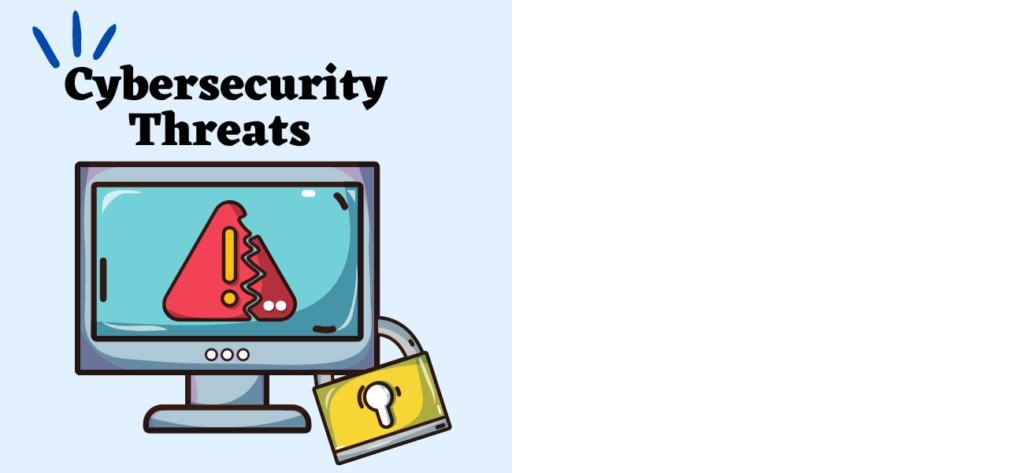
Cybersecurity threats can be a significant challenge in the 21st-century workplace. With the increasing use of technology in business operations, employers must take steps to protect their data and information from cyber-attacks. Cybercriminals can steal sensitive information, disrupt business operations, and cause damage to a company’s reputation. The rise of remote work also increases the risk of cyber attacks, as employees may be using unsecured networks or devices to access company information.
Employers must take steps to protect their data, such as by implementing robust security measures, such as firewalls, intrusion detection systems, and encryption. They should also regularly train employees to identify and prevent cyber threats, such as phishing emails, and have incident response plans.
Furthermore, it’s important to keep software and systems up to date and to have a third party conduct regular security assessments to identify vulnerabilities. Employers who don’t take cybersecurity seriously risk losing their data and reputation, which can be costly and difficult to recover from.
3. Employee Burnout:
With the blurring of lines between work and personal life, employees are at risk of burnout. Employers must take steps to ensure that employees have a good work-life balance.
Future Developments in Management Strategies
The 21st-century workplace is constantly evolving, and we will likely see new management strategies emerge in the future.
Cultures will be enhanced, with their ultimate goal of employee engagement and market capitalization growth for the highest competitive advantage. This action leads to long-term prosperity for all involved.
Some of the future developments that we can expect include:
1. Artificial Intelligence And Machine Learning:
Artificial intelligence and machine learning will play an increasingly important role in the workplace. Employers will need to figure out how to use these technologies to improve their operations and management strategies.
2. Greater Use of Data and Analytics:
Employers will also use data and analytics to improve their decision-making and management strategies.
3. Emphasis On Sustainability:
With the increasing awareness of the impact of business on the environment, employers will likely place a greater emphasis on sustainability in their management strategies.
Greater use of virtual and augmented reality: As virtual and augmented reality technologies continue to improve, employers will likely use these technologies to enhance employee training and communication.
Conclusion
The 21st-century workplace is vastly different from what it was just a few decades ago. The workforce is more diverse, technology has advanced significantly, and the way we work has changed. As a result, traditional management strategies are no longer as effective as they once were. Employers must adapt their management strategies to take into account the changes happening in the workplace. Strategies such as emphasizing employee autonomy, embracing remote work, prioritizing employee development, encouraging flexibility and work-life balance, and emphasizing transparency and communication are effective in the 21st-century workplace. Employers must also be aware of the challenges facing the 21st-century workplace and be prepared for future developments in management strategies. By adapting to the changing environment, employers can create a workplace that is both productive and successful.


